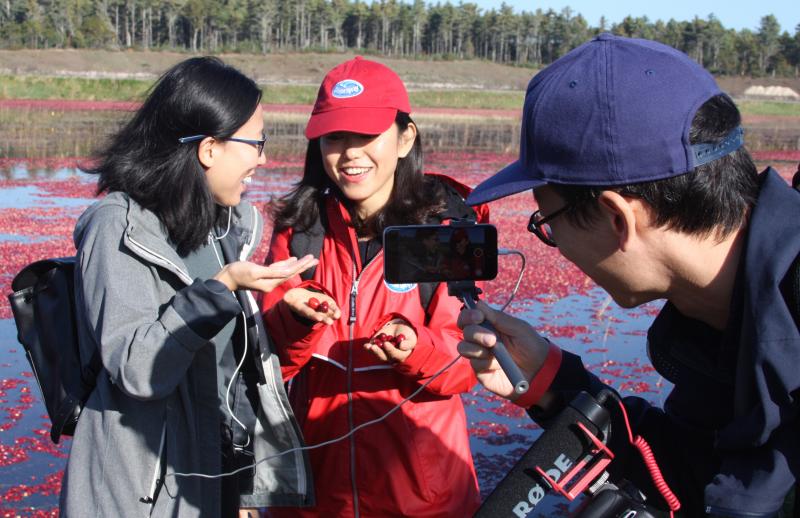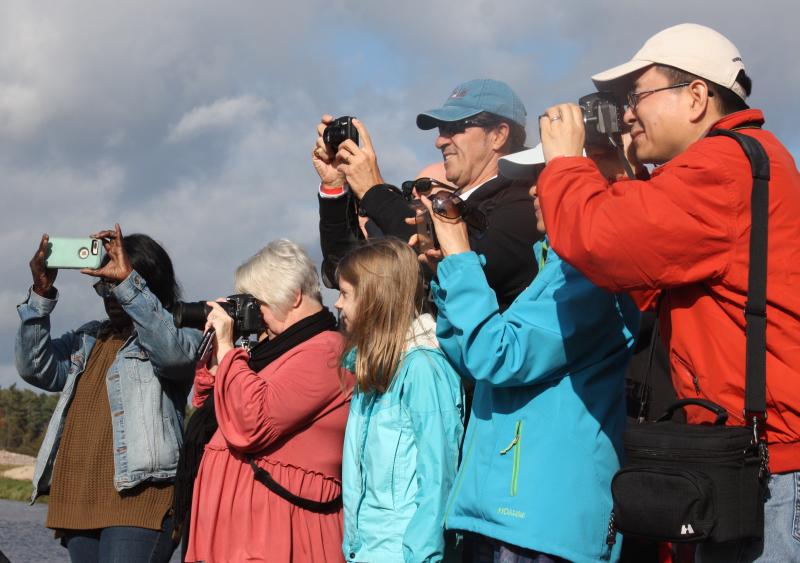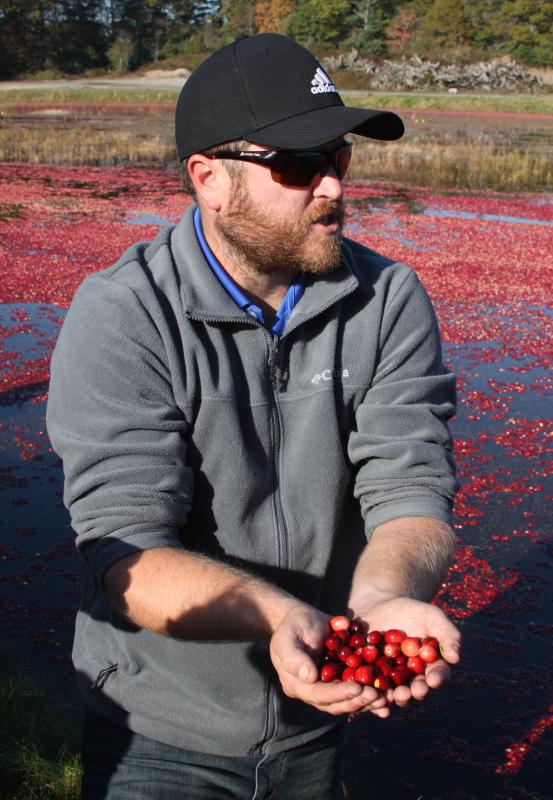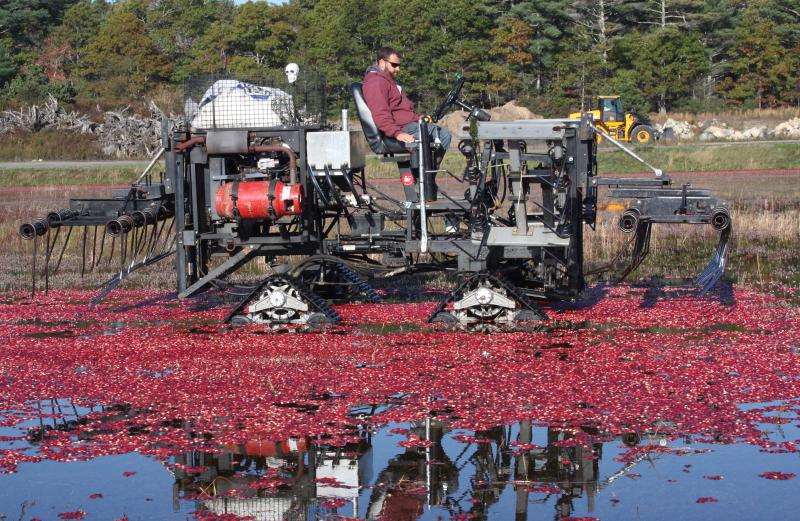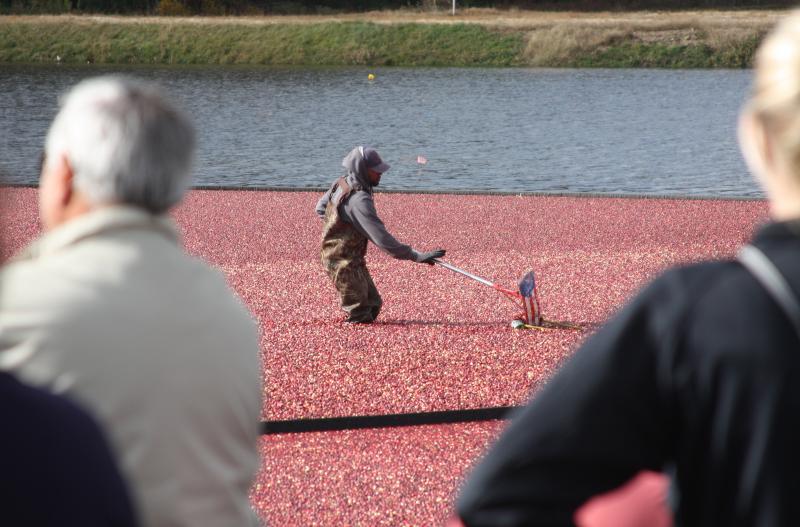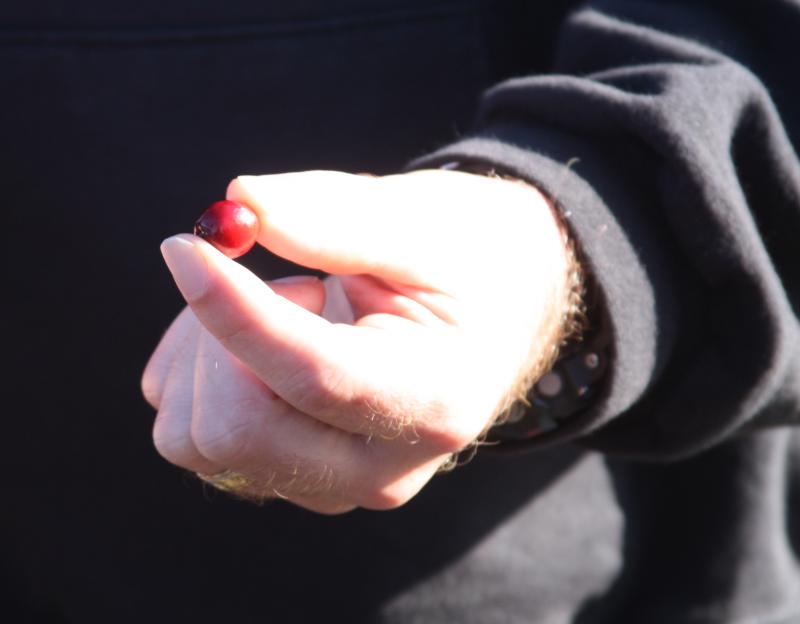Bog tourists get the scoop on cranberries in Wareham
Standing next to an A.D. Makepeace Co. bog, Dingfang Zhou and Mandy Zxi each popped a cranberry into their mouths, then pursed their lips.
Their expressions said it all – this berry is tart!
Zhou, a reporter with China-based Pear Video, and Zxi, a member of Ocean Spray’s global brand team, were among three busloads of visitors that toured company bogs on Saturday. Held during peak harvest season, the tour offered a glimpse behind the scenes at Wareham-based A.D. Makepeace Co., the world’s largest cranberry grower.
Captured on video, Zxi and Zhou’s taste test was beamed live to an audience in China where imports of the crop are on the rise.
“This is an exciting way to share our beautiful Massachusetts harvest with the world,” said Kate Leonard, Ocean Spray's communications manager. Ocean Spray, a cranberry grower cooperative, is based in Middleboro and Lakeville.
Pear Video broadcasters filmed during the 90-minute tour that featured cranberry history, an explanation of harvesting and time in the bogs. It started with A.D. Makepeace Co. farmer Alex Manchester welcoming visitors and promising them a “cranberry safari.”
Some facts he shared included the A.D. Makepeace Co.’s historic place within the industry. Started in 1854, the company is one of the founding members of Ocean Spray, which formed in 1930.
He noted Massachusetts is the nation’s second largest cranberry grower. Only Wisconsin grows more having eclipsed the Bay State in the 1990s. However, Massachusetts does hold one important distinction.
“This is the spiritual home of the cranberry,” said Manchester. “It all began here.”
Captain Henry Hall of Dennis is credited with being the first person to successfully cultivate cranberries. In 1816, after he fenced in a patch of wild cranberry vines, Hall accidentally discovered an important growing technique – ice sanding.
That winer, fierce winds blew sand onto Hall’s frozen cranberry patch. When spring arrived, Hall believed the plants would be dead, but instead he found the vines thrived because the sand stimulated the development of new roots. From there, the industry took off and the technique is still used.
Today, the “wet harvesting” method removes 90 percent of cranberries from Massachusetts’ bogs. Berries are knocked loose using a water-reel harvesting machine, and the bogs are then flooded. Using a rubber boom, farmers corral the floating berries, which are then vacuumed up and shipped for processing and storage.
Wet harvesting began in the 1970s and is relatively unchanged since then, said Manchester. The remaining 10 percent of cranberries are dry harvested, meaning they are picked from bogs that aren’t flooded. Those berries are sold as fresh fruit.
On Saturday, visitors witnessed a wet harvest in the bogs off of Federal Road.
A.D. Makepeace Co. Operational Manager Glenn Reid fielded questions and explained all aspects of the harvest, which ends in mid-November, just in time for Thanksgiving.
According to Manchester, the meal isn’t complete without the native fruit, which has long been a staple of the holiday
“We don’t have documentary evidence, but we strongly believe cranberries were at the first Thanksgiving,” he said.



